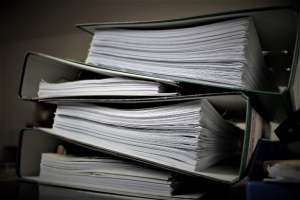Editor's Note: Take a look at our featured best practice, AI in Supply Chain Management: Strategy Paper (219-slide PowerPoint presentation). Unlocking the Future of Supply Chain Management with AI and Blockchain Introduction Welcome to the comprehensive guide on revolutionizing Supply Chain Management through the power of Artificial Intelligence (AI) and Blockchain technology. This strategy paper, presented across a massive [read more]
CMR Documentation – Purpose and Legal Characteristics
Also, if you are interested in becoming an expert on Supply Chain Management (SCM), take a look at Flevy's Supply Chain Management (SCM) Frameworks offering here. This is a curated collection of best practice frameworks based on the thought leadership of leading consulting firms, academics, and recognized subject matter experts. By learning and applying these concepts, you can you stay ahead of the curve. Full details here.
* * * *

If you play a role in the shipping industry, you need to understand the legal nuances and functional aspects of CMR documentation.
Purpose of CMR Documentation
A CMR document’s objective is to work as a contract between the consignor, consignee, and the carrier that declares and validates the carriage of goods by road across international borders. This document will be applicable if at least one country of the concerned parties has ratified the protocols of the CMR convention.
The CMR documentation seeks to fulfill the following purposes as part of its responsibility.
Identification of Goods in the Cargo
The consignment note discloses the quantity and nature of the merchandise in the freight. It also includes the weight and dimensions of the goods.
Evidentiary Functionality
The CMR note functions as legal proof that the freight is in good condition and that the quantity is according to specifications. The documentation also works as a delivery verification for the consignor and consignee.
Receipt of Goods
The entire document acts as a receipt of the transit process of the cargo by road.
Point of Reference
Furthermore, CMR documentation can function as a primary point of reference when a dispute occurs. The protocols of the 1956 CMR convention impose liability on the carrier in case any loss or damage of the goods occurs while in portage.
Legal Characteristics of the CMR Documentation
What are the characteristics of this internationally-binding protocol?
Non-Negotiable
The CMR convention differs from the Turkish Commercial Code as it does not specify the consignment note as a negotiable instrument or a document of title.
Reservation of Rights
The consignee’s and the consignor’s rights are distinct but are not limited to the consignment note. According to Article 12, the possession of goods is transferable without concerning the CMR note.
Validation
The validity of the contract of carriage does not expire if any damage occurs to the goods. It also applies to the absence or loss of goods according to Article 4 of the CMR convention.
Conclusion
As the CMR note doesn’t mean the transfer of the title of goods, the consignor can withdraw delivery of the goods. The consignee reserves the right not to ask for the delivery of the goods bearing the consignment note as a reference.

Want to Achieve Excellence in Supply Chain Management (SCM)?
Gain the knowledge and develop the expertise to become an expert in Supply Chain Management (SCM). Our frameworks are based on the thought leadership of leading consulting firms, academics, and recognized subject matter experts. Click here for full details.
Supply Chain Management (SCM) is the design, planning, execution, control, and monitoring of Supply Chain activities. It also captures the management of the flow of goods and services.
In February of 2020, COVID-19 disrupted—and in many cases halted—global Supply Chains, revealing just how fragile they have become. By April, many countries experienced declines of over 40% in domestic and international trade.
COVID-19 has likewise changed how Supply Chain Executives approach and think about SCM. In the pre-COVID-19 era of globalization, the objective was to be Lean and Cost-effective. In the post-COVID-19 world, companies must now focus on making their Supply Chains Resilient, Agile, and Smart. Additional trends include Digitization, Sustainability, and Manufacturing Reshoring.
Learn about our Supply Chain Management (SCM) Best Practice Frameworks here.
Readers of This Article Are Interested in These Resources

|
|
83-slide PowerPoint presentation
|
|
Excel workbook
| |||
About Shane Avron
Shane Avron is a freelance writer, specializing in business, general management, enterprise software, and digital technologies. In addition to Flevy, Shane's articles have appeared in Huffington Post, Forbes Magazine, among other business journals.
Top 10 Recommended Documents on Supply Chain Management
» View more resources Supply Chain Management here.
» View the Top 100 Best Practices on Flevy.













